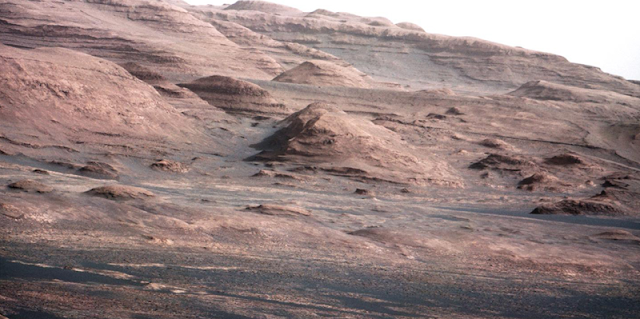1: Space race
One of the most interesting areas of research was looking into facts and statistics Looking into how much is spent on space exploration and research the statistics below show this.
exploration and research:
United States $17,600 millionESA $5,350 millionFrance $2,590 millionRussia $2,400 millionJapan $2,100 millionGermany $1,821 millionItaly $1,550 millionChina $1,300 millionIndia $1,268 millionUnited Kingdom $414 millionIran $400 millionCanada $373.5 millionBrazil $343 millionUkraine $250 millionBelgium $230 millionSpain $175 millionNetherlands $160 millionSouth Korea $150 millionSwitzerland $110 millionSweden $100 million
Mars:
Nasa's latest mission to mars allowed us to get our first look at the planet, i was also intrigued that we discovered that the planet had frost this was a huge discovery in space exploration.
Goals: NASA's Mars Science Laboratory mission is preparing to set down a large, mobile laboratory - the rover Curiosity - using precision landing technology that makes many of Mars' most intriguing regions viable destinations for the first time.
During the 23 months after landing, Curiosity will analyze dozens of samples drilled from rocks or scooped from the ground as it explores with greater range than any previous Mars rover. Its assignment: Investigate whether conditions have been favorable for microbial life and for preserving clues in the rocks about possible past life.
Accomplishments: Curiosity landed safely on Mars and is preparing for its prime science mission. Its first success was the use of a new sky crane landing procedure to deliver the car-sized rover to the surface in Mars' Gale crater.
Statistics on the Planets looking at the sheer mass of these giants and getting a feel of the size of these planets within our solar system.
4: Space accidents: I also looked at the accidents and tragedies that have occurred within the history of space exploration i was drawn to looking into what went wrong and if it could have been prevented this also links into the technological advancements.
1986
Jan. 28, Challenger Space Shuttle: exploded 73 seconds after liftoff, killing all 7 crew members. They were: Francis R. Scobee, Michael J. Smith, Judith A. Resnik, Ronald E. McNair, Ellison S. Onizuka, Gregory B. Jarvis, and schoolteacher Christa McAuliffe. A booster leak ignited the fuel, causing the explosion.
Indepth Research into Disasters:
Columbia space shuttle 2003 (NASA)The Space Shuttle Columbia disaster occurred on February 1, 2003, when the Space Shuttle Columbia disintegrated over Texas during re-entry into the Earth's atmosphere, resulting in the death of all seven crew members, shortly before it was scheduled to conclude its 28th mission, STS-107. The loss of Columbia was a result of damage sustained during launch when a piece of foam insulation the size of a small briefcase broke off the Space Shuttle external tank (the main propellant tank) under the aerodynamic forces of launch. The debris struck the leading edge of the left wing, damaging the Shuttle's thermal protection system (TPS), which protects it from heat generated with the atmosphere during re-entry. While Columbia was still in orbit, some engineers suspected damage, but NASA managers limited the investigation, on the grounds that little could be done even if problems were found.
Looking into the different arguments between groups of people, I was drawn to some of the arguments and opinions just to look into
FLAGS WAVE
Photograph courtesy NASA
Forty years after U.S. astronaut Neil Armstrong became the first human to set foot on the moon, many conspiracy theorists still insist the Apollo 11 moon landingwas an elaborate hoax. Examine the photographic evidence, and find out why experts say some of the most common claims simply don't hold water.You can tell Apollo was faked because ... the American flag appears to be flapping as if "in a breeze" in videos and photographs supposedly taken from the airless lunar surface.The fact of the matter is ... "the video you see where the flag's moving is because the astronaut just placed it there, and the inertia from when they let go kept it moving," said spaceflight historian Roger Launius, of the Smithsonian'sNational Air and Space Museum in Washington D.C.
6: Life in space
``
What do they eat: I was interested at how humans lived in space so i decided to look at necessities such as eating, sleeping ect, i was very interested at looking into this further once i had seen what development and technology we have come up with.
At the beginning of the 1960's, space food was bite-sized or placed in aluminum tubes. The food was prepared this way so that they wouldn't be too heavy or take up too much space. From the 1970's, during the Apollo period, the number of space food items began to increase. Currently, there are about 150 different types of food. The meals are very similar to the meals we eat on Earth.
Space foods are in plastic containers. Some space foods can resume their consistency by adding cold or hot water, while others can be heated up in the oven. Foods such as fruits, bread and nuts can be eaten just as they are. When drinking liquids, a straw is used to suck the liquid out of a sealed package. This is done so that it will not spill or possibly cause any damage to machines.
At the International Space Station, 300 different types of food are planned to be on the menu.
This was my main area of interest within my research i loved looking how the human race has progressed in space flight and the achievements on the way.
:NASA
The leaders in space explanation pushing the boundaries of space exploration, I decided to look into this to see where nasa originated from.






No comments:
Post a Comment